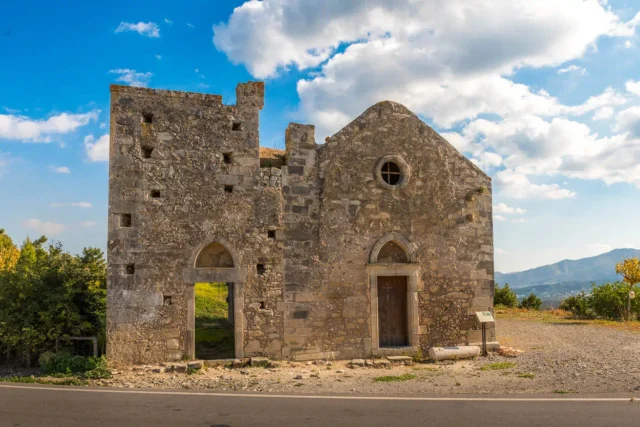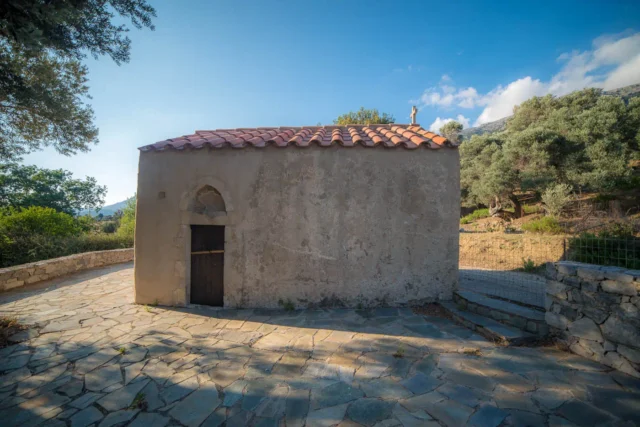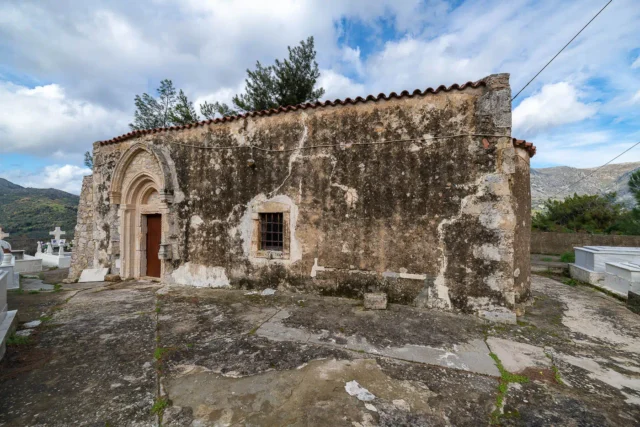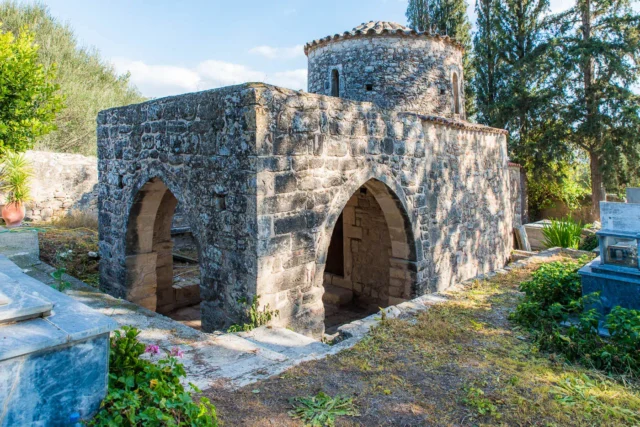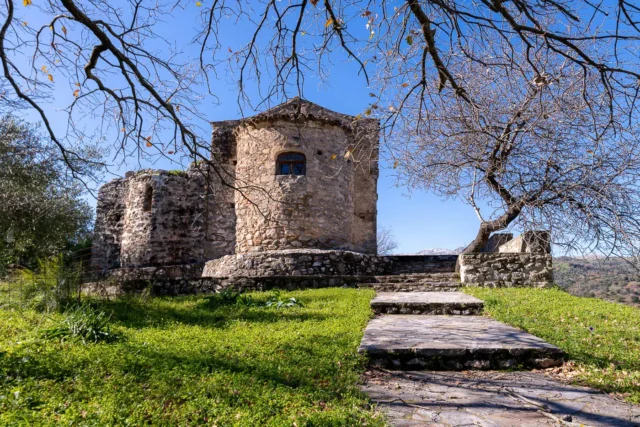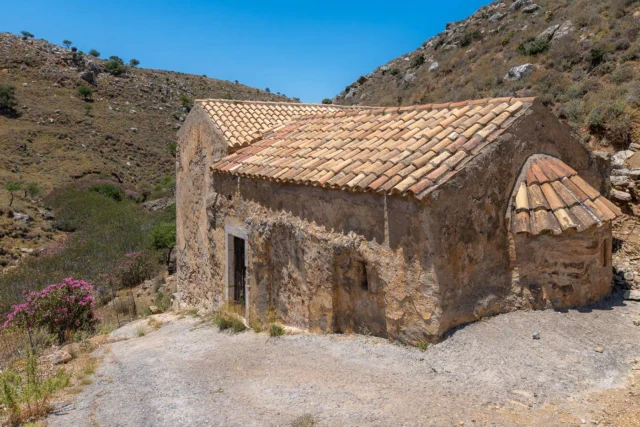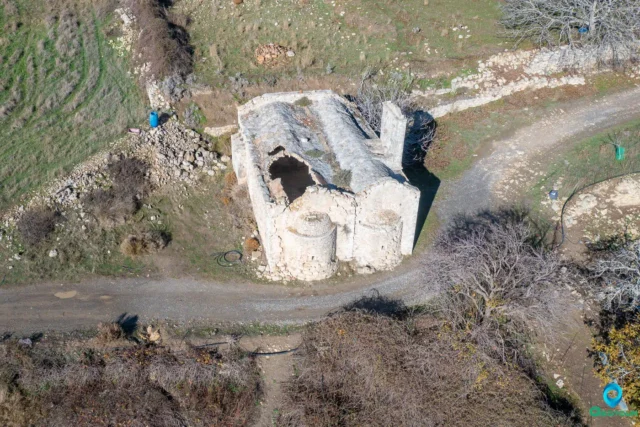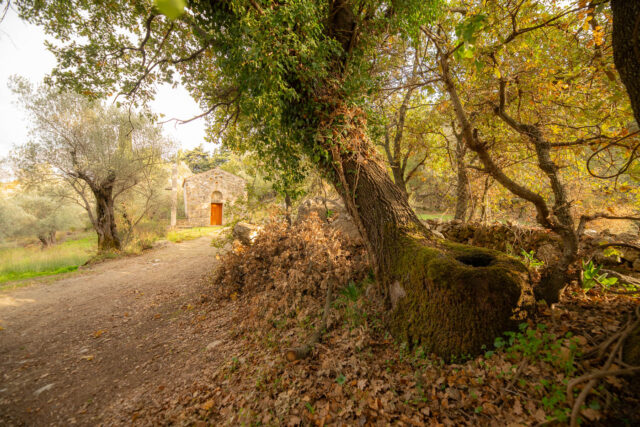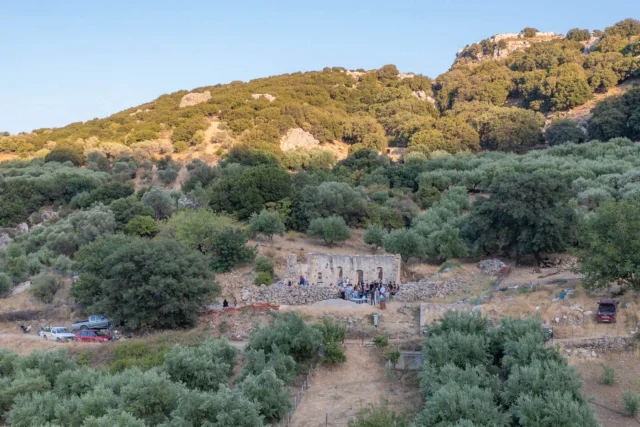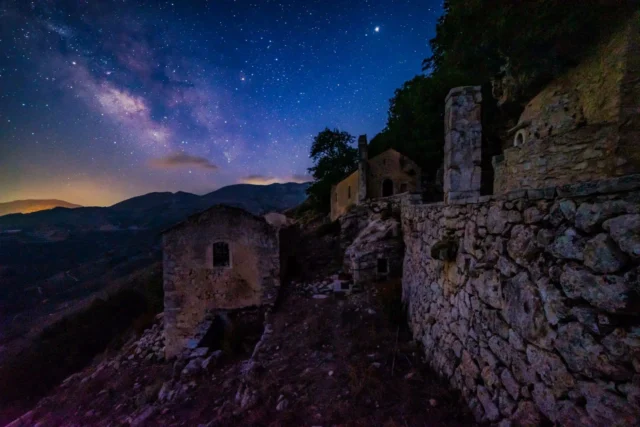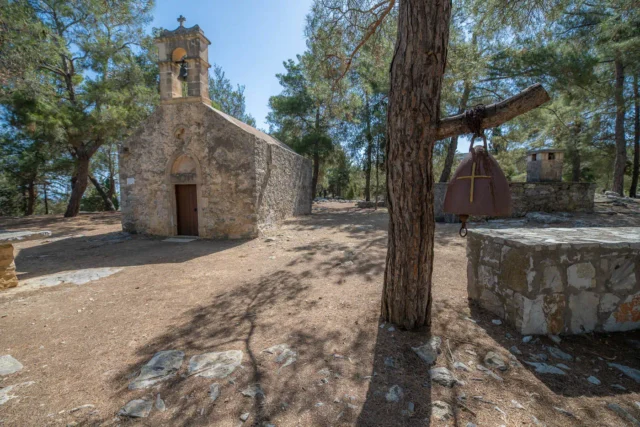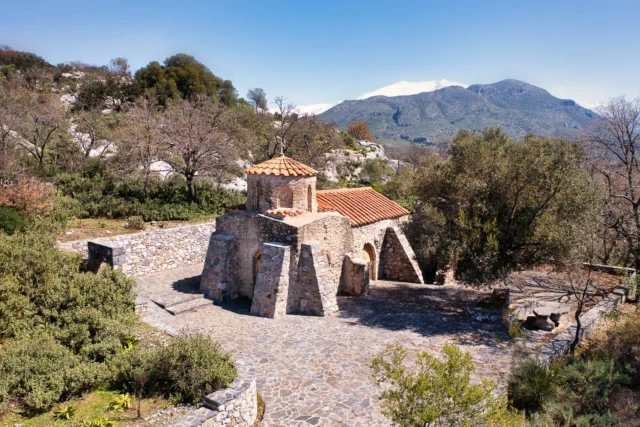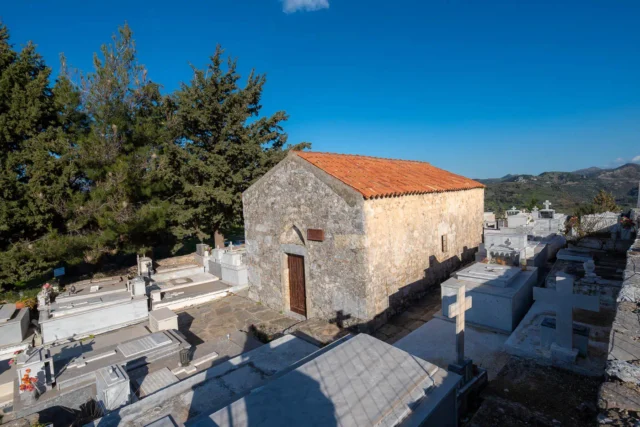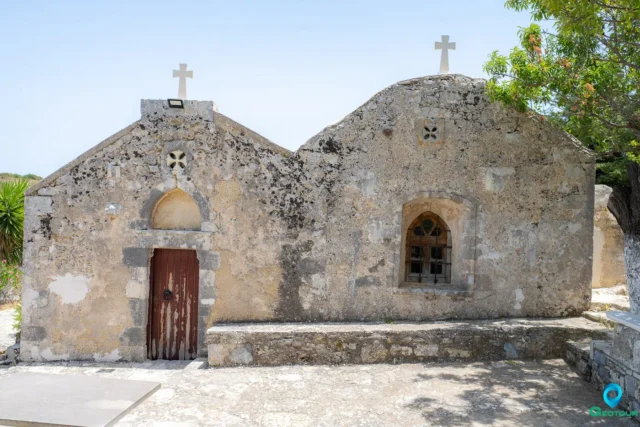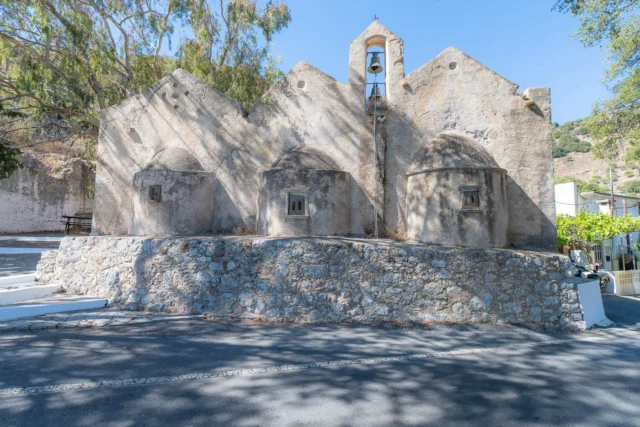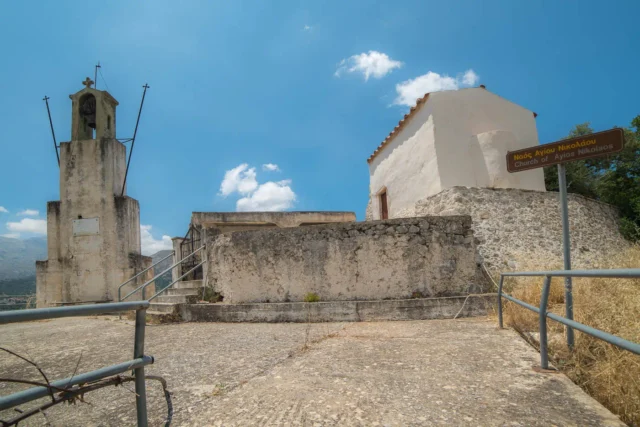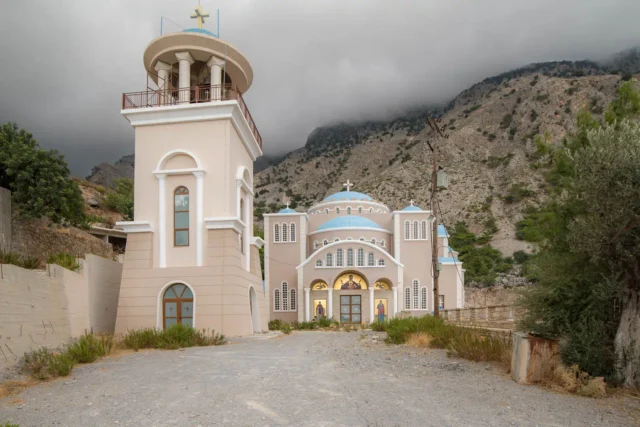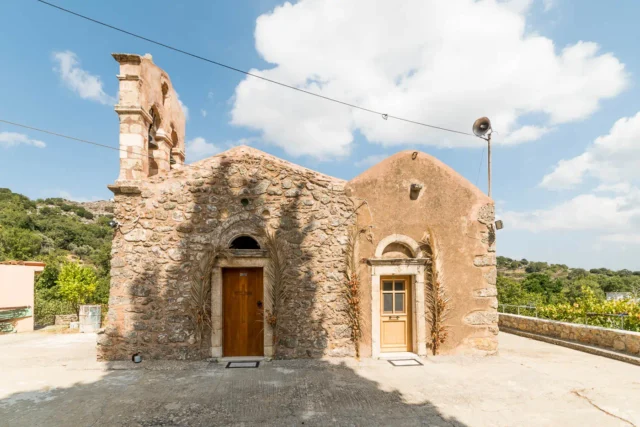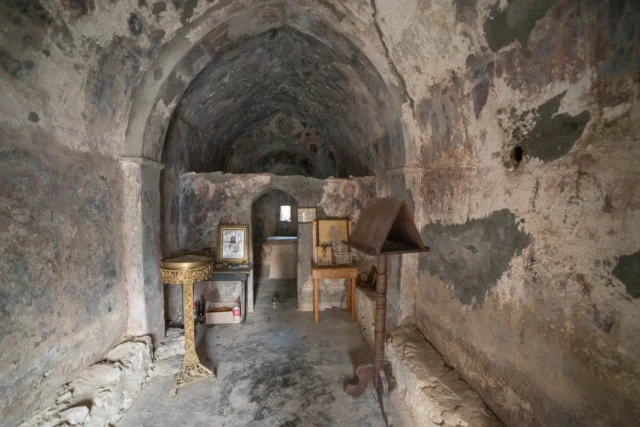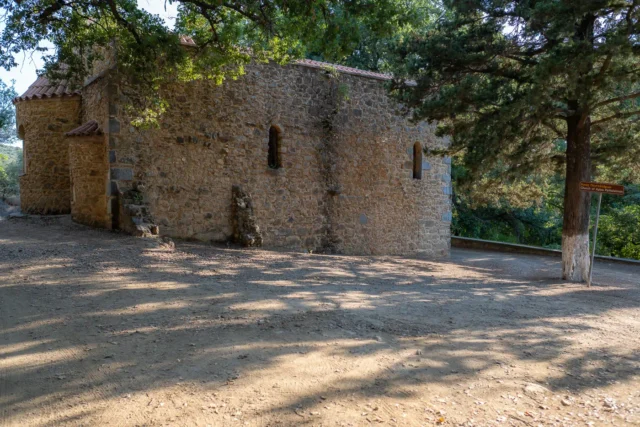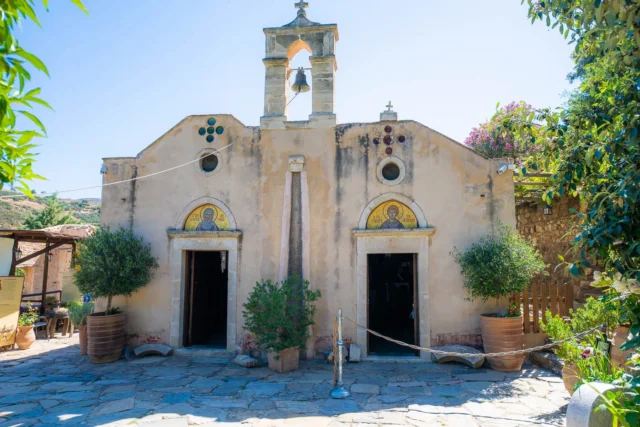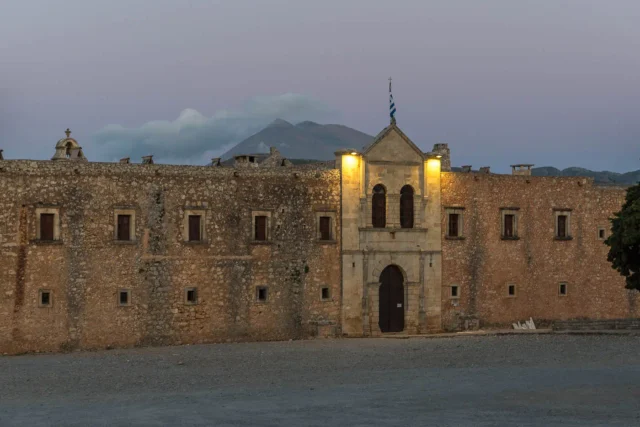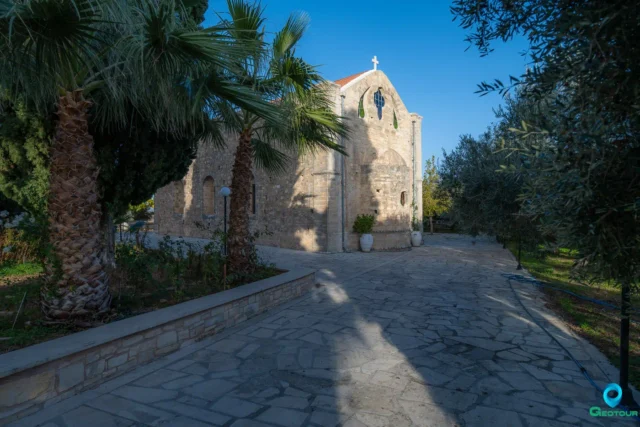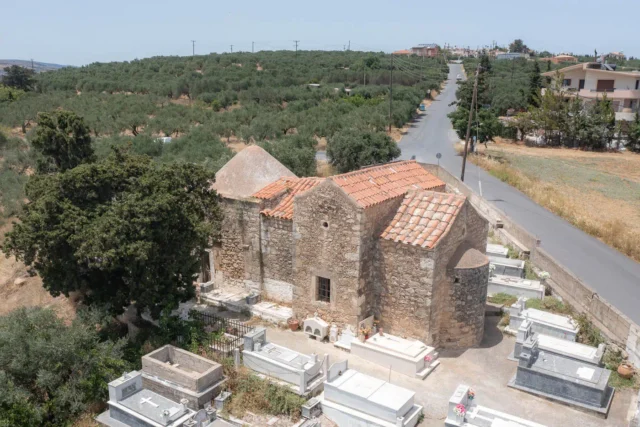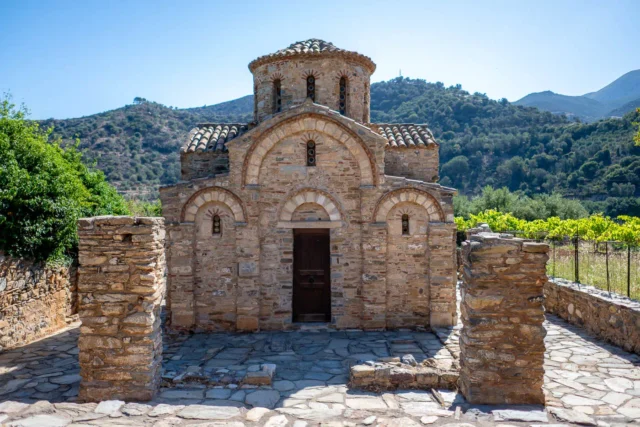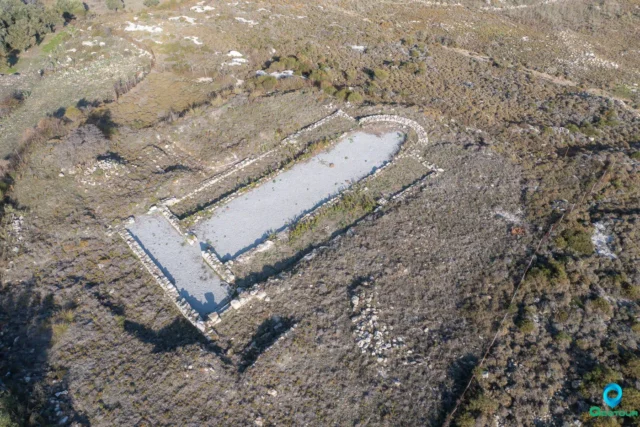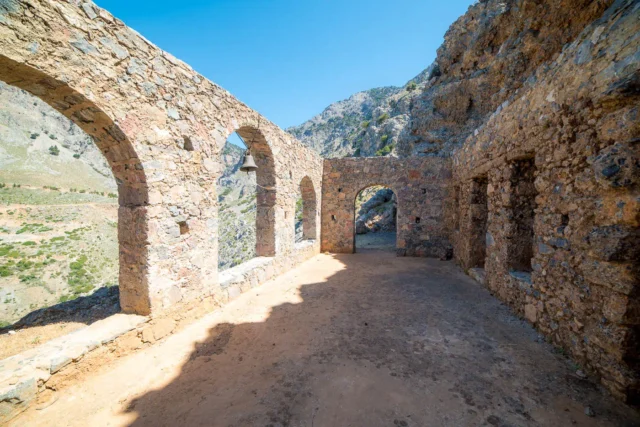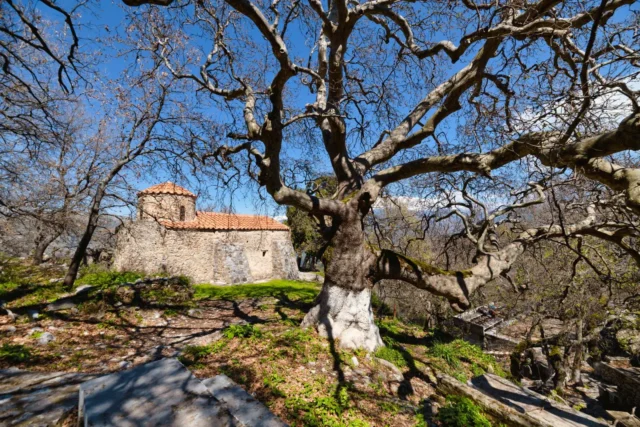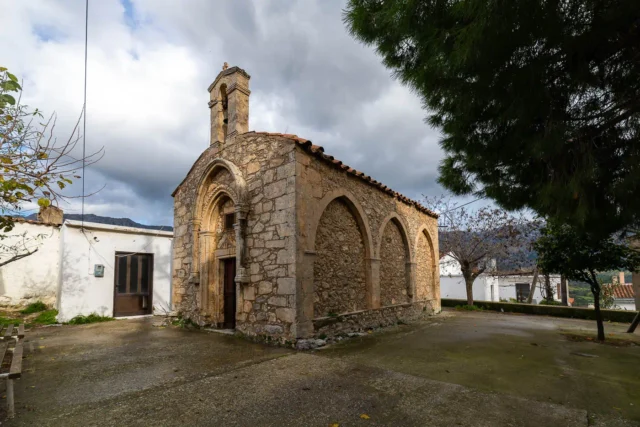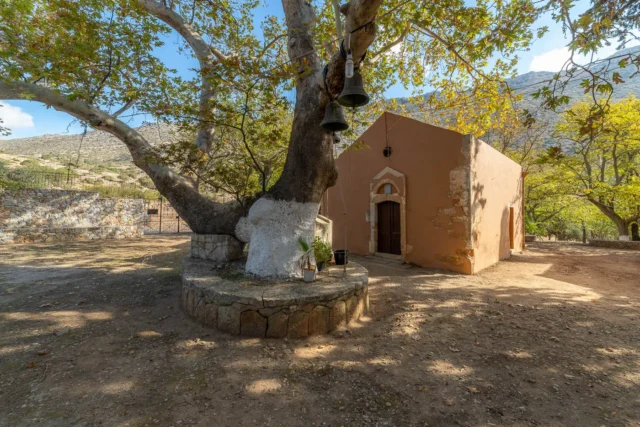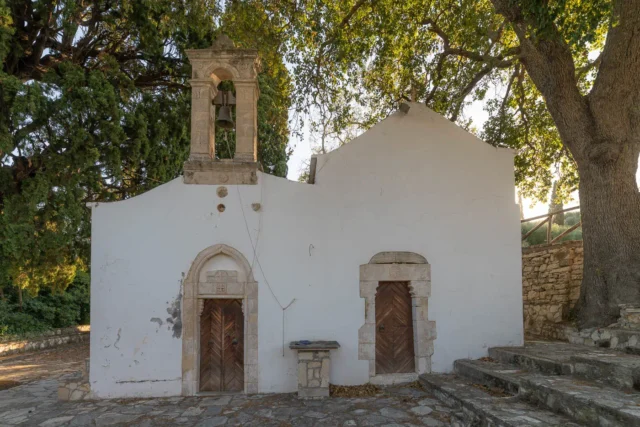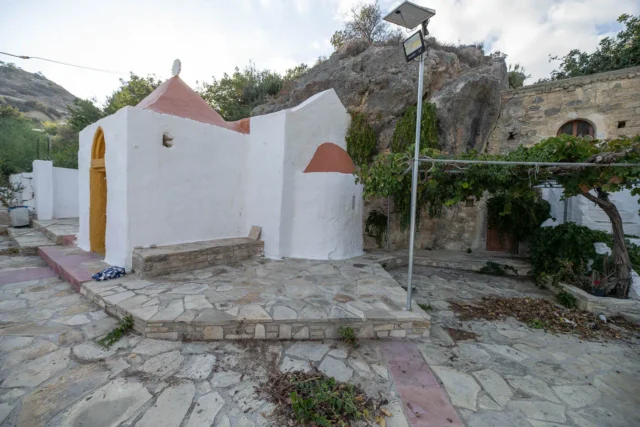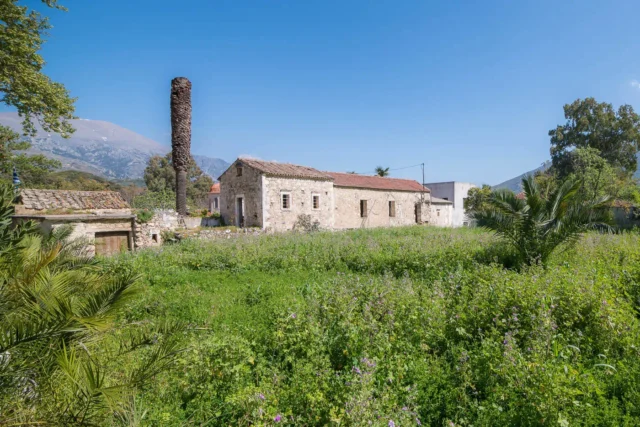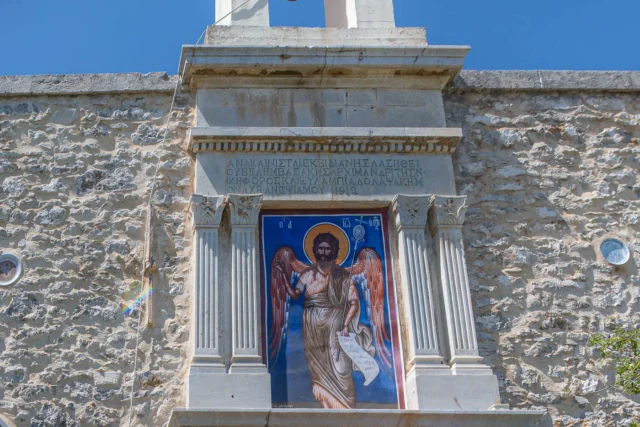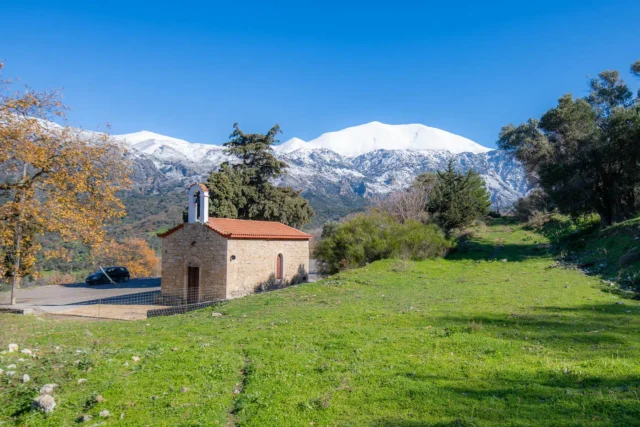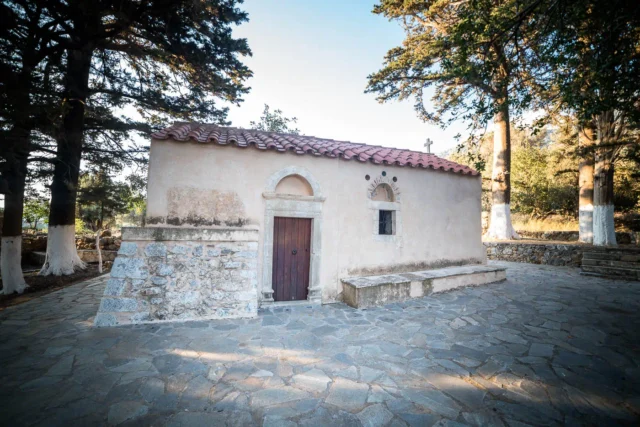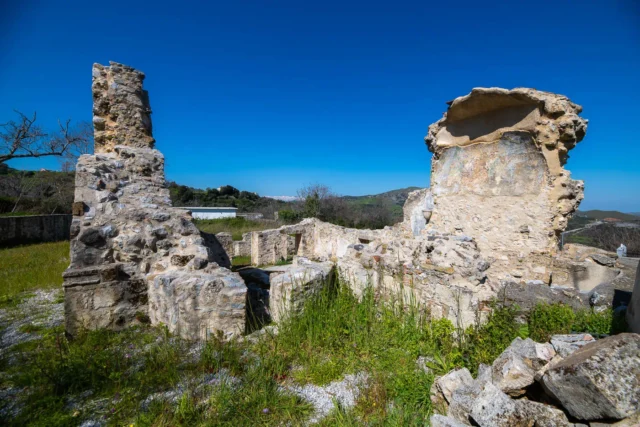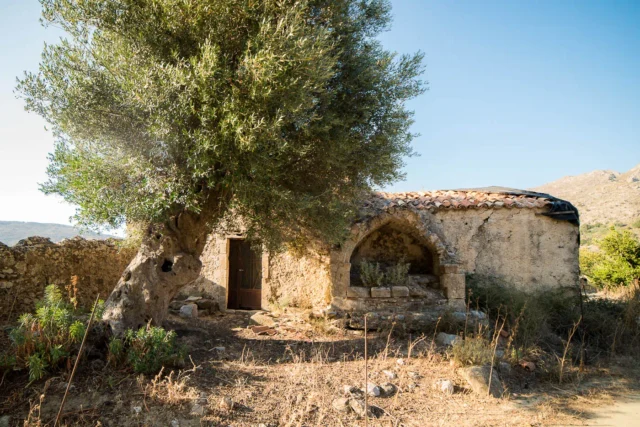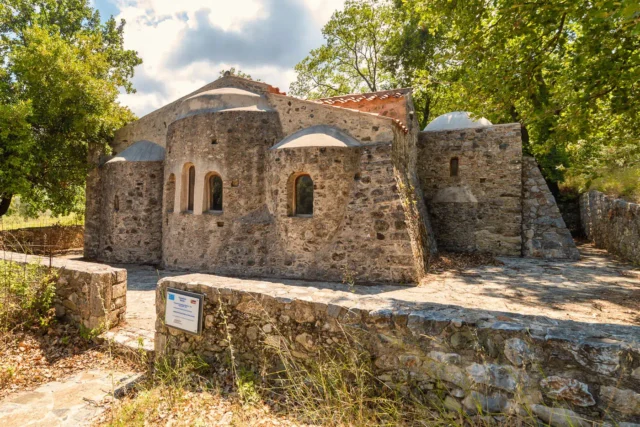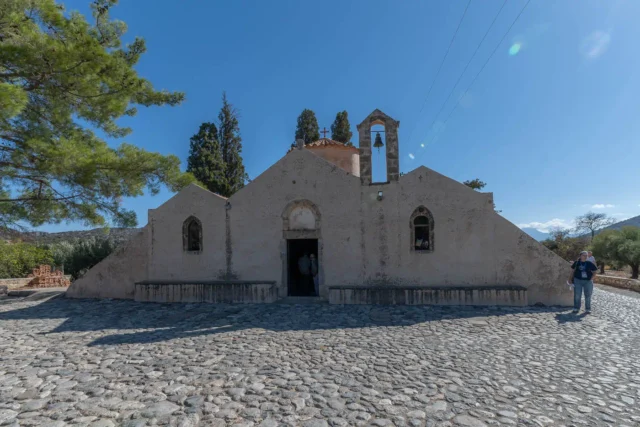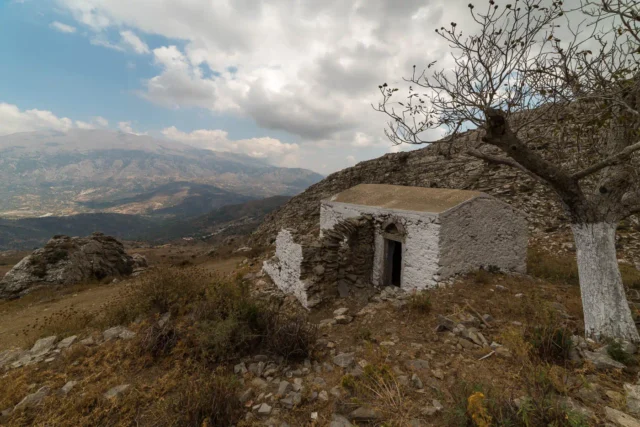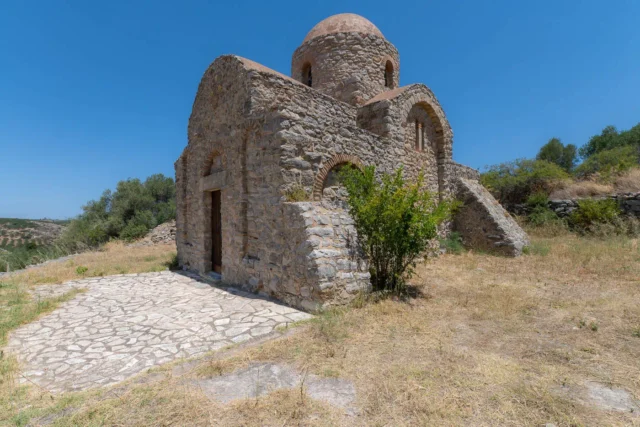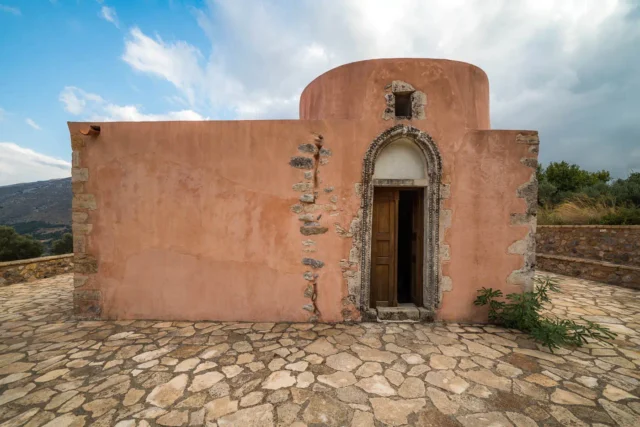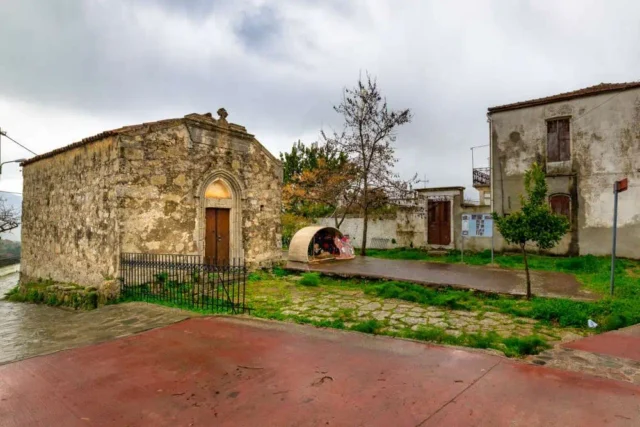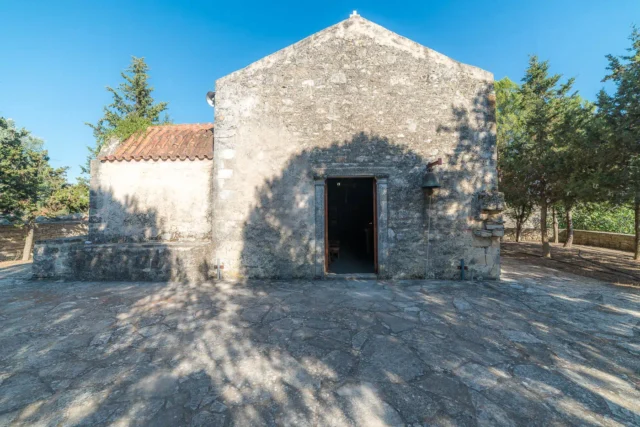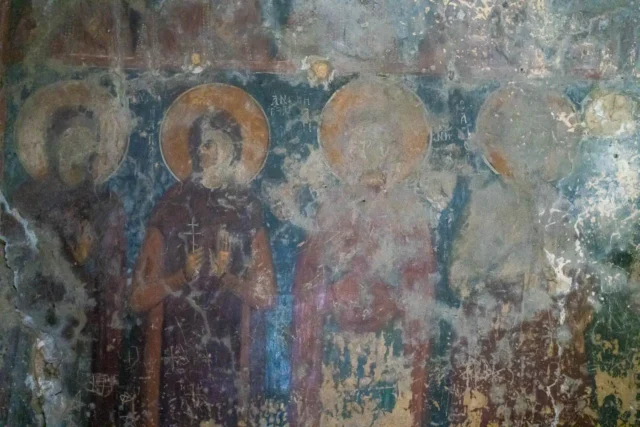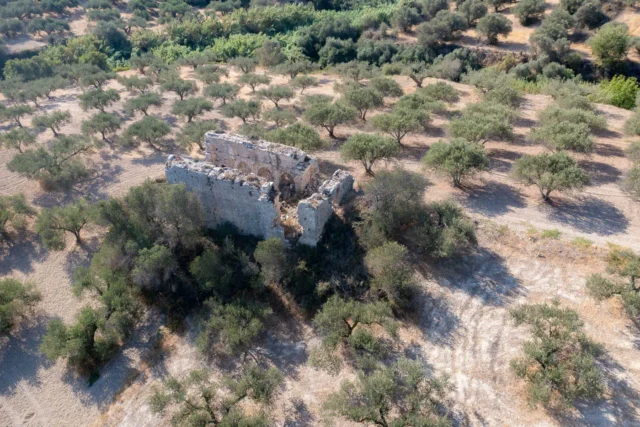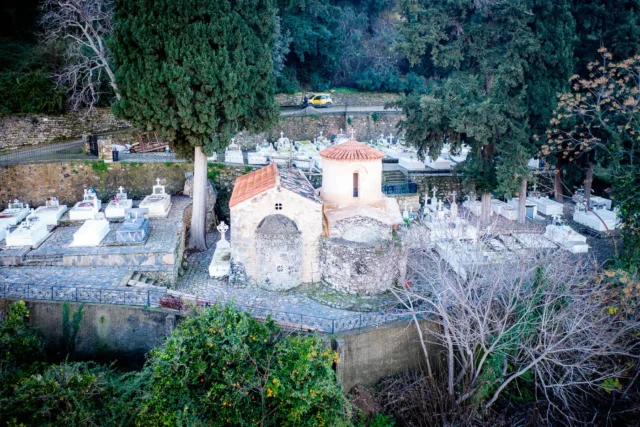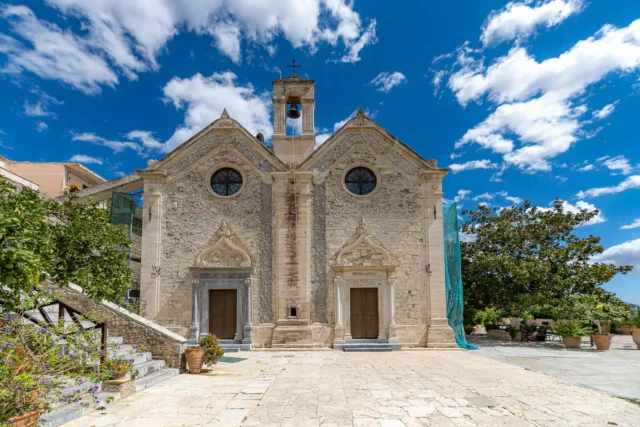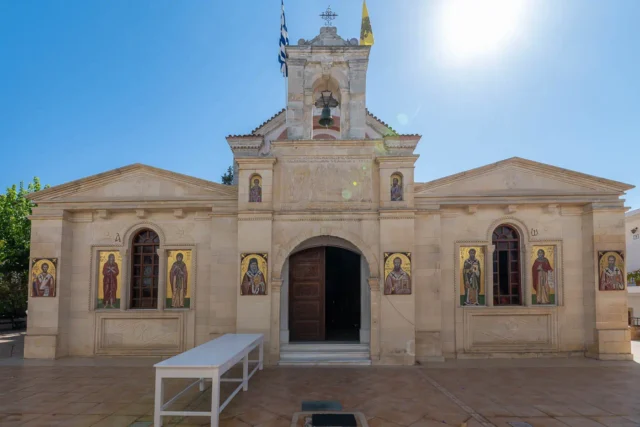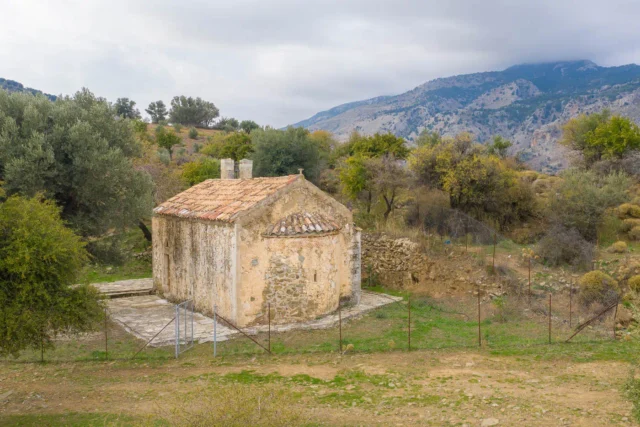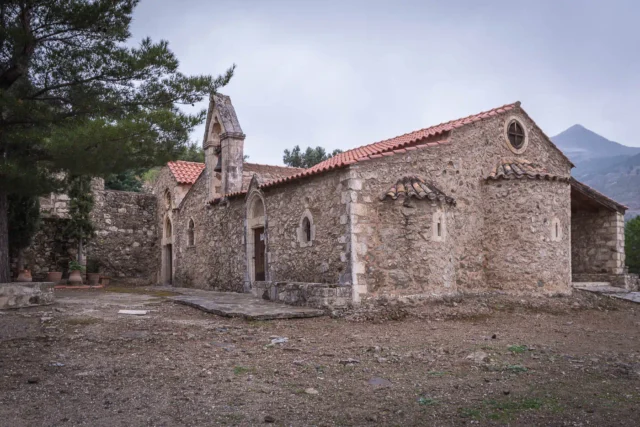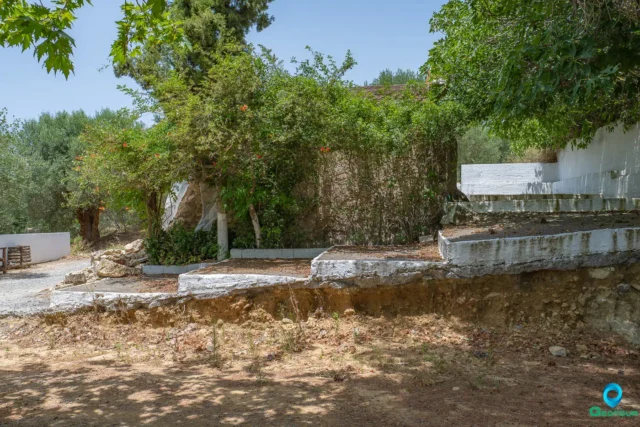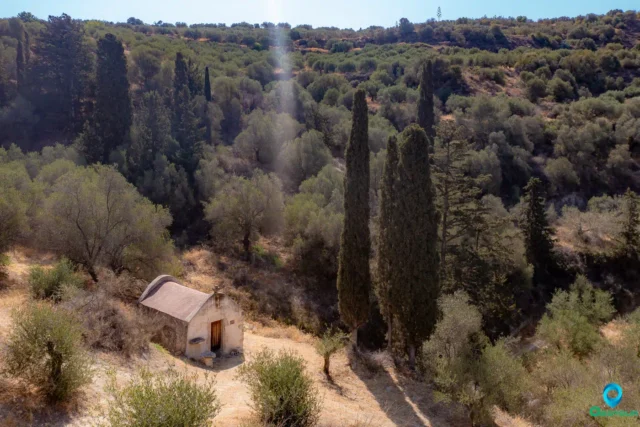
Agia Paraskevi in Aitania
Agia Paraskevi, a 14th-century Byzantine church near Aitania village in Crete, is adorned with well-preserved frescoes depicting saints like Vlasios, Titus, and John the Theologian, alongside biblical scenes. The church, accessed via a steep dirt road, features a single room and a sanctuary with unique motifs like the Melismos and Christ as the Great High Priest. Frescoes on the north and south walls portray various saints, including military saints, while the arch showcases scenes from the Dodekaorton. Local tradition recounts miraculous healing associated with the church, with a ritual involving holy water from a now-dried spring. Restored in 2003, the church's exterior is simple, with a buttress and a stone table used for bread blessing during festivals.
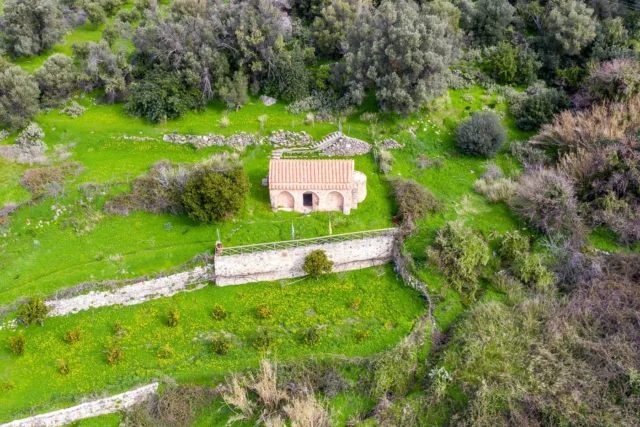
Agios Georgios Xifoforos
Agios Georgios Xifoforos, a mid-13th-century Byzantine church located near Apodoulou in Crete's Amari region, boasts well-preserved frescoes and a single-aisled, barrel-vaulted architecture. Dedicated to Saint George (Xifoforos), the church exemplifies Byzantine art and religious traditions. Its frescoes offer valuable insights into the cultural and artistic practices of the era. The church's history, potentially linked to a monastery, remains partially unclear. Today, it serves as a place of worship and pilgrimage, open to visitors interested in Byzantine architecture and religious art.
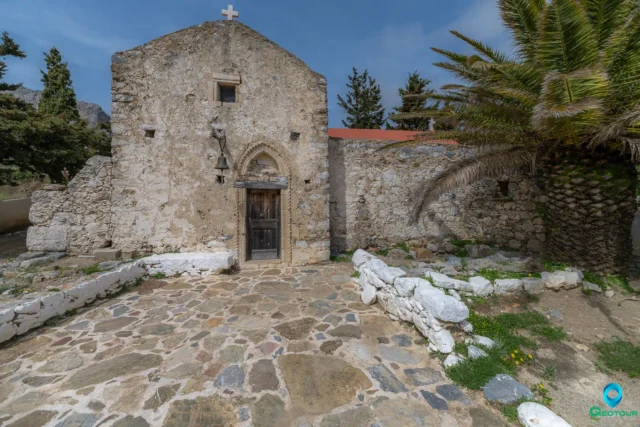
Agios Pavlos Monastery near Paranymfoi
The Agios Pavlos Monastery is a Venetian-era ruin near Paranymfoi, Crete. Located in the Asterousia Mountains, it once served as a hermitage and monastery. The site features a single-aisled basilica church with traces of frescoes, a carved doorway, and ruins of monks' cells. The monastery, linked to the scholar Iosif Filagris, flourished during the Venetian period but was abandoned in the 20th century. The surrounding area shows signs of inhabitation since antiquity, including possible evidence of an ancient sanctuary. The monastery is accessible by a dirt road from Paranymfoi and is situated above the Porofarago gorge, near the hiking trail to Tries Ekklisies.
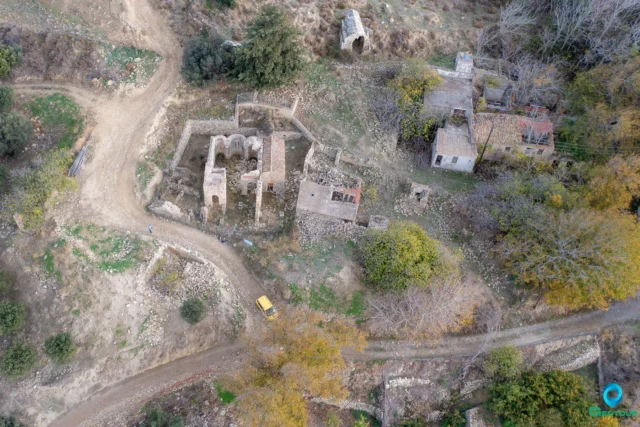
Mikra Episkopi
Mikra Episkopi is an abandoned village in Crete, Greece. Once known as the seat of the Diocese of Arcadia, it is now deserted with dilapidated houses and overgrown paths. The village is located 7 km southwest of Arkalochori and 1 km north of Partira. Despite its current state, Mikra Episkopi holds historical significance, particularly due to the ruined church of Sotiras Christos (Savior Christ), a Venetian-era structure built upon the remains of an earlier basilica. The church features a cruciform architectural style with a dome and a narthex, with some walls, columns, and capitals still visible. Additionally, the village has the church of Panagia (Virgin Mary) with Venetian-era frescoes and the ruins of the church of Agios Dimitrios (Saint Demetrius).
The population of Mikra Episkopi has dwindled over the centuries, from a mix of Christians and Muslims in the 1800s to becoming completely abandoned in the 1990s. Recent census data shows a slight increase in population, but the village remains largely deserted.
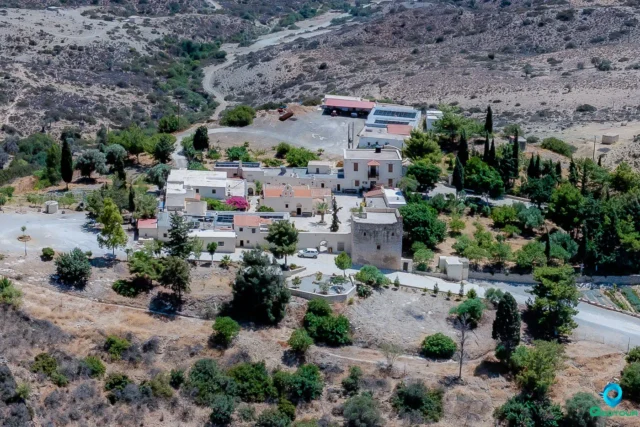
Moni Odigitrias monastery
Moni Odigitrias, a 14th-century Greek Orthodox monastery nestled in the Asterousia Mountains of Crete, stands as a testament to the island's rich history and resilience. Dedicated to the Virgin Mary "Odigitria" ("She who shows the way"), the monastery has been a place of pilgrimage and refuge for centuries.
During the Venetian period, Moni Odigitrias flourished as a center of learning and art. Its walls are adorned with frescoes by renowned Cretan painters, including Angelos Akotantos, who also crafted the monastery's iconic iconostasis. The monastery's collection of valuable icons and manuscripts further reflects its cultural significance.
Moni Odigitrias played a pivotal role in the Cretan resistance against the Ottoman Empire. It served as a sanctuary for rebels and a symbol of defiance. The legendary "Xopapas" (Father Ioasaph), a monk turned rebel leader, led the resistance from within the monastery's walls.
Today, Moni Odigitrias remains a working monastery, home to a small community of monks. It has undergone extensive restoration and welcomes visitors to explore its historic grounds, including a museum showcasing artifacts from its past. The museum houses a traditional loom, a stone oven, an olive press, and agricultural tools, providing a glimpse into the monastery's self-sufficient lifestyle.
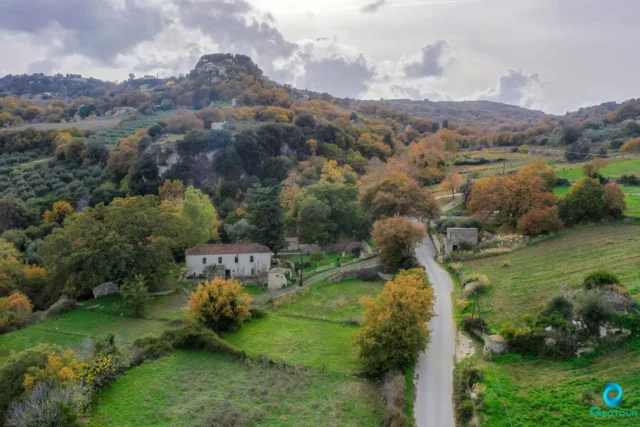
Panagia Kardiotissa in Agios Thomas
Panagia Kera Kardiotissa, a 14th-century Byzantine monastery near Agios Thomas in Crete, is dedicated to the Nativity of the Virgin Mary. Located in a lush landscape at an altitude of 630 meters, the monastery is situated in a place called Mouzouras, next to the Axedianos River. The monastery once housed a miraculous icon of Panagia Kardiotissa, depicting the Virgin Mary holding Christ. The icon's origins are debated, with some attributing it to an Armenian monk named Lazarus and others to the Heraklion painter Andreas Ritzos. The icon's miraculous powers were documented as early as 1415. The monastery became a significant pilgrimage site in 1912 following a vision of the icon of Saint George. It served as a nunnery from 1935 to 1962 and sheltered residents during the German occupation. Today, the renovated site features a centuries-old oak tree, peacocks, and a workshop for traditional weaving.
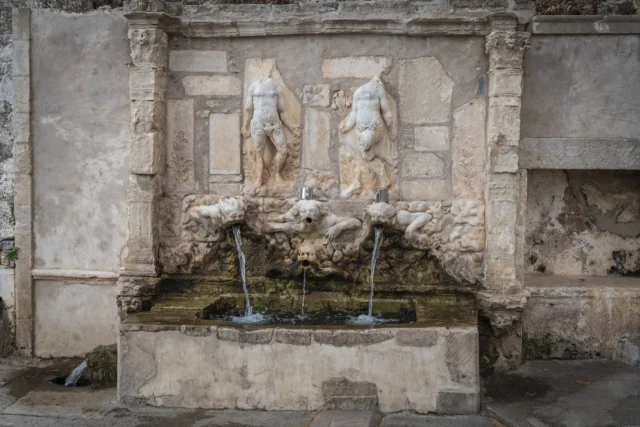
Vrontisi monastery
Moni Vrontisiou, a historic monastery in the Psiloritis Mountains of Crete, dates back to the 9th century. Dedicated to Saint Anthony and the Touching of Thomas, it is known for its architecture and frescoes. The monastery played a role in the Cretan struggle for independence, serving as a refuge for monks and a hub for revolutionary activities. Its fortified walls, two-story main building, and bell tower stand as a testament to its history. The 15th-century marble fountain at the entrance is a highlight, featuring intricate carvings. The main church houses surviving frescoes from the 14th century. Moni Vrontisiou is located 49 kilometers southwest of Heraklion and is open daily from 8:00 AM to 5:00 PM with free admission.

